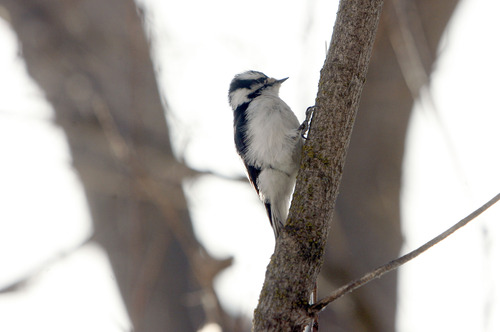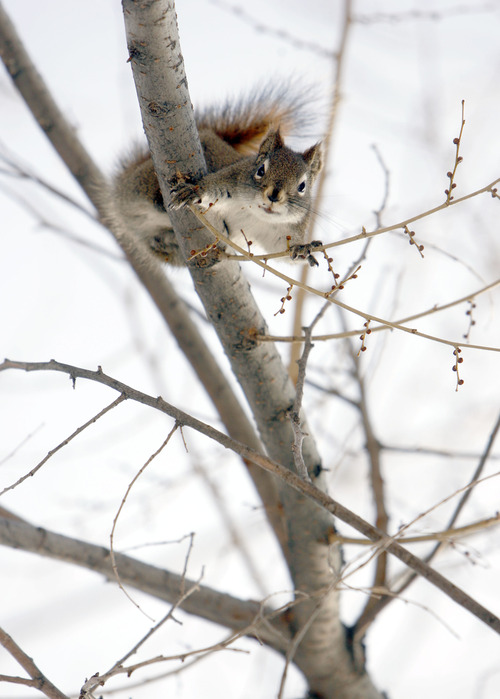This is an archived article that was published on sltrib.com in 2014, and information in the article may be outdated. It is provided only for personal research purposes and may not be reprinted.
Salt Lake City will cut down 30 percent of the trees in Miller Park in order to restore the bird refuge and stream habitat along Red Butte Creek between 1500 and 1700 East.
The plan includes removal of non-native trees, planting of native species and restoration of the streambed and banks.
Some residents fear removal of Siberian elms and black locusts will severely diminish the canopy of the east-side park south of 900 South. The species known as Tree of Heaven also will be removed.
Funding for the $765,000 project comes from Chevron through the Utah Division of Water Quality as mitigation for Chevron's ruptured pipeline in June 2010 that sent oil down Red Butte Creek.
Although most land on the banks of the creek is private as it meanders west from Red Butte Garden and Arboretum to Liberty Park, the quarter mile or so of stream bank in Miller Park belongs to Salt Lake City.
Some residents are not looking forward to the five- to six-month long construction project.
"I've lived here for 20 years. Living through the oil spill was physically and emotionally very hard," said Lisa Long, whose property abuts the park. "Now there is this money for what I believe is a very destructive project."
The restoration work will severely diminish the tree canopy and it could take a long time to grow back to its current level, Long said.
"There are 50 black locusts near my property," she said. "Mormon pioneers planted black locusts. I love black locusts."
According to the mitigation plan, cottonwood and other native species will be planted to replace the non-native species.
Lynn Pershing, co-chairwoman of the Yalecrest Community Council, said the plan has been contentious. "It's been such a long process over two years," she said. "I think it's been frustrating on both sides."
Among the issues is the use of herbicides. In some cases, the roots will be left to reinforce the stream banks. Workers will paint those stumps with a product known as Rodeo to ensure the non-natives don't sprout anew, said Emy Maloutas, open space lands program manager for Salt Lake City.
The chemical is "appropriate for application in aquatic zones," she said. The treatment, however, will be applied sparingly and only on dry ground.
About 275 trees will be removed, she said, but the large majority of them are small with trunks of 3 to 4 inches in diameter. It will open the canopy to sunlight that will allow ground cover and shrubs to be planted and return the stream zone to a more natural habitat, she said.
About 120 "large" trees will be replanted along with smaller ones that will bring the total to about 400, Maloutas said.
The project has yet to be awarded to a contractor but Maloutas said she is hopeful work can begin by mid-April. The restoration will require motorized equipment for removing large trees and placement of huge boulders in the streambed. But she said the contract emphasizes a "low-impact approach."
City officials are aware of the concerns of residents in the Yalecrest area, Maloutas said.
"Change and construction can be disconcerting because you can't imagine the outcome," she said. "But we will create a space where the community will see a restoration project that brings home watchable wildlife. The long-term impacts will enhance user experience and property values."
Nonetheless, Jeff Salt, of the Great Salt LakeKeeper environmental organization, said he has been frustrated by the city's reluctance to share information until recently.
He is not confident that the plan now posted on the city's website at http://www.slcgov.com is a good one.
"The wholesale removal of trees from the park could change the ecology," he said. "Less shade and hotter temperatures will allow weeds to take over."
Further, he said he isn't convinced the plan contemplates high spring runoff that can move large boulders. "We're not confident this design controls the kinetic energy during high stream flows."
But Moulatas said she is confident that state and federal agencies overseeing streambed restoration will sign off on the plan in the coming weeks.
Miller Park restoration
• Removal of three non-native tree species.
• Planting of native trees, shrubs and ground cover.
• Streambed restoration and stream bank stabilization.
• Limited trail and sign improvements.
• Park closed from mid-April to mid-September.





